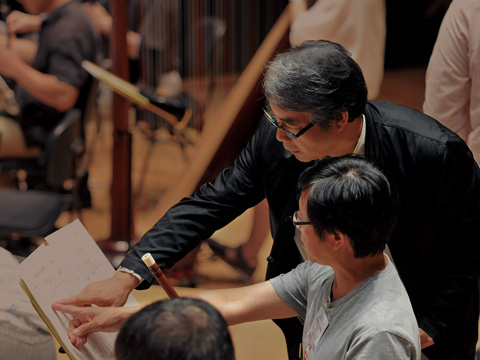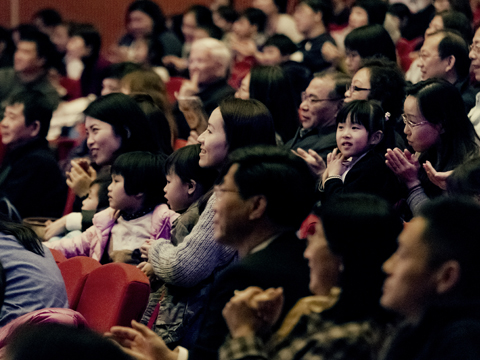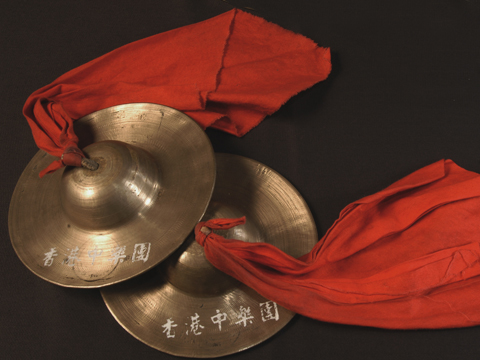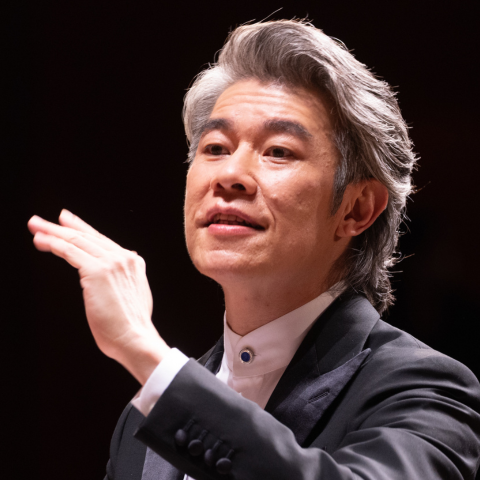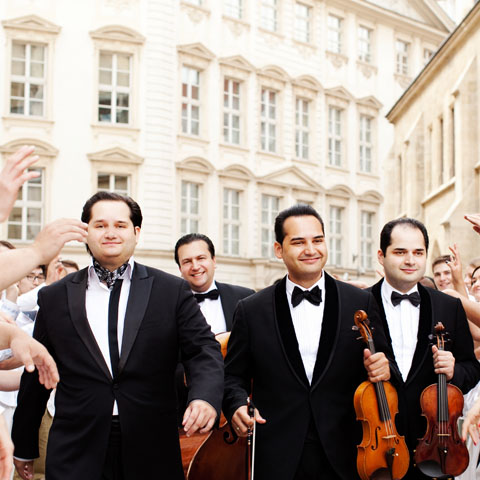
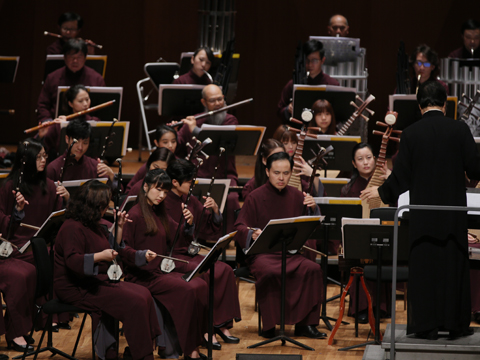
HKCO
Hong Kong Chinese Orchestra Environmental, Social and Governance Artistic Director and Principal Conductor for Life Orchestra Members Council Advisors & Artistic Advisors Council Members Management Team Vacancy Contact Us (Tel: 3185 1600)

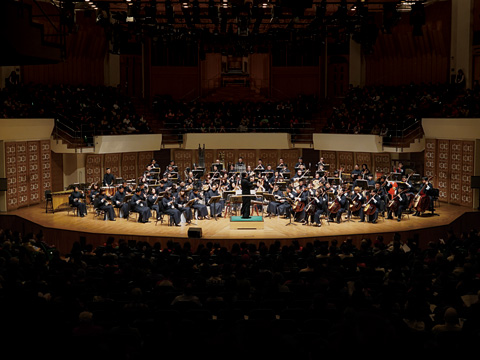
Concerts

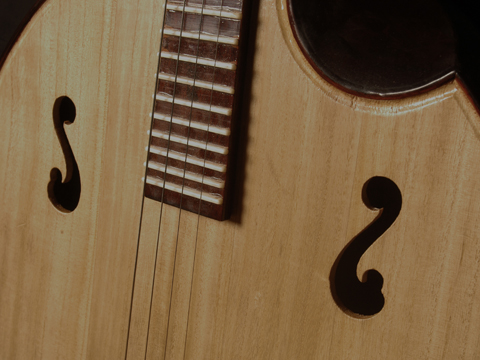
Education
The HKCO Orchestral Academy Hong Kong Youth Zheng Ensemble Hong Kong Young Chinese Orchestra Music Courses Chinese Music Conducting 賽馬會中國音樂教育及推廣計劃 Chinese Music Talent Training Scheme HKJC Chinese Music 360 The International Drum Graded Exam

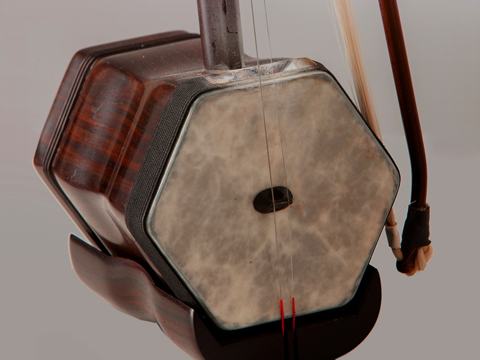
Instrument R&D
Eco-Huqins Chinese Instruments Standard Orchestra Instrument Range Chart and Page Format of the Full Score Configuration of the Orchestra
42nd Orchestral Season
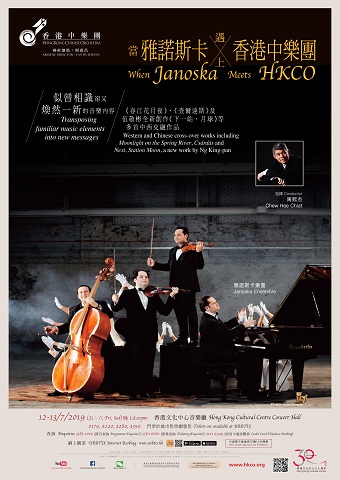
When Janoska Meets HKCO
The Exceptional
8:00 pm
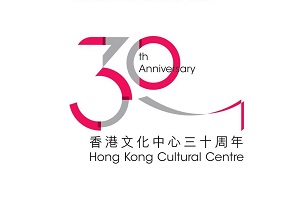
Overture (From the Opera Le nozze di Figaro) Wolfgang Amadeus Mozart
Yesterday Paul McCartney
Rumba für Amadeus František Janoska
Performed by: Janoska Ensemble
Moonlight on the Spring River Ancient Melody Arr. by Qin Pengzhang and Luo Zhongrong
Re-arr. by František Janoska
Performed by: Janoska Ensemble, Hong Kong Chinese Orchestra Virtuosi
Contigo en la Distancia César Portillo de la Luz
Vocal: Arpad Janoska
Csárdás Vittorio Vincenzo Monti Arr. by Janoska Ensemble
Performed by: Janoska Ensemble, Hong Kong Chinese Orchestra Virtuosi
Violin: Bandi Janoska
Orchestra Suite No. 2 Chew Hee Chiat
Fledermaus - Ouverture à la Janoska Johann Strauss II Arr. by Janoska Ensemble Re-arr. by Ng King-pan (Arrangement commissioned by the HKCO / Premiere of the Chinese Orchestral Version)
Paganinoska (Based on Caprice No. 24) Janoska Ensemble and Niccolo Paganini Arr. by Frantisek Janoska Re-arr. by Ng King-pan (Arrangement commissioned by the HKCO / Premiere of the Chinese Orchestral Version)
Chinese Orchestra and Janoska Next, Station Moon Ng King-pan (Commissioned by the HKCO / World Premiere)
The first movement: The Hidden Moon
The second movement: Moonlight Represents My Heart
The third movement: The Gateway
Time: 6:45pm
Venue: Level 4 Foyer, Auditoria Building, Hong Kong Cultural Centre
Free Admission. Quota is limited. First come first served.
Reservation:3185 1647
The concert features six “family” members from the Janoska Ensemble of Europe, which comes with their own cross-cultural elements. Their instruments and musical styles also bring together the artistic aesthetics of Western music and elements of ethno music, as well as the characteristics of smooth jazz and popular music. As for the Hong Kong Chinese Orchestra, they have long been expanding their music through various forms and means, including cultural integration.
Globalization via the Internet
Music is a cultural phenomenon that develops with the times, and these kinds of cross-cultural concerts are an inevitable mark in history during the course of its development. In today’s society, where information development and globalization brought about by the Internet has greatly narrowed the distance between people and broke through the cultural barriers between ethnic groups as well as traditional geographical barriers, this is the path that music must take as it reaches out for new possibilities.
The development of humankind was impeded by geographic barriers in the past. Different living habits, customs, and cultures were formed under different living environments, leading to instruments, music, and music aesthetics that were each of a kind. Although the East and the West have had exchanges and contacts in the last hundreds of years, their cultures largely developed on their own. A major breakthrough was finally made as we entered the new millennium, and China’s current Belt and Road policy and its conception are an inevitable phenomenon in today's globalized, Internet-centric world.
Amid the macro changes in cultures, this concert has been conceived with the following fusion elements that distinguished it from other cross-cultural concerts that integrate different music aesthetics in the past:
The first are items on the programme featuring both Chinese and Western instruments. The ancient Chinese tune Moonlight on the Spring River, and Csárdás, which is imbued with the Hungarian-Gypsy style, are transposed for a mix of Chinese and Western instruments (with vocals added to the latter). Performed by small ensembles, the gist of its arrangement is for the personality of each instrument to be distinguishable.
The second is to adapt arrangements by the Janoska Ensemble for joint performance by the Ensemble and the full-size Chinese orchestra. It is not just about bringing out the personality of each instrument; instead, it is about how a composer can create new timbres and sounds through orchestration and highlighting the character of the instruments to bring out a new power to touch and to move. The two featured works are the Ensemble's arrangements of Johann Strauss Jr.'s Fledermaus - Overture à la Janoska, and Paganinoska based on Paganini's Caprice No. 24. Both pieces integrate music from different cultures, showcasing the arrangement techniques of Hong Kong composer Ng King-pan and the performing skills of the musicians.
The third is the finale, Next, Station Moon. Commissioned for world premiere in this concert by Ng King-pan, it exemplifies how the wildest imagination is possible through a clever use of the recent Chinese lunar exploration mission that achieved the first soft landing on the far side of the Moon. But the aim of course goes beyond this, to the boundless, fantastical world of imagination. Given that instruments are regarded as a tool for “making music” in every ethnic group and country, a “tailor-made” piece should allow the colliding of different instrumental characteristics and combinations to open up a new world of musical possibilities. The audience might have to keep their psychological seat belts fastened when traveling to a musical world that they have never set foot in before, where every unexpected thing can happen – just to keep them from being thrown off the adventurous ride even if the music ends up surprising them like never before, and they can carry on cheering for a new world of musical possibilities!
Your Support
Friends of HKCO
Copyright © 2025 HKCO
